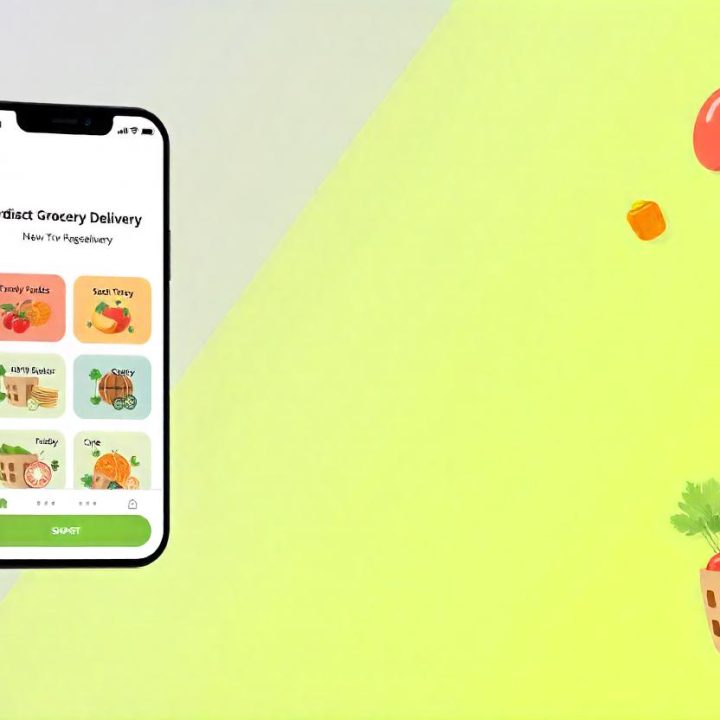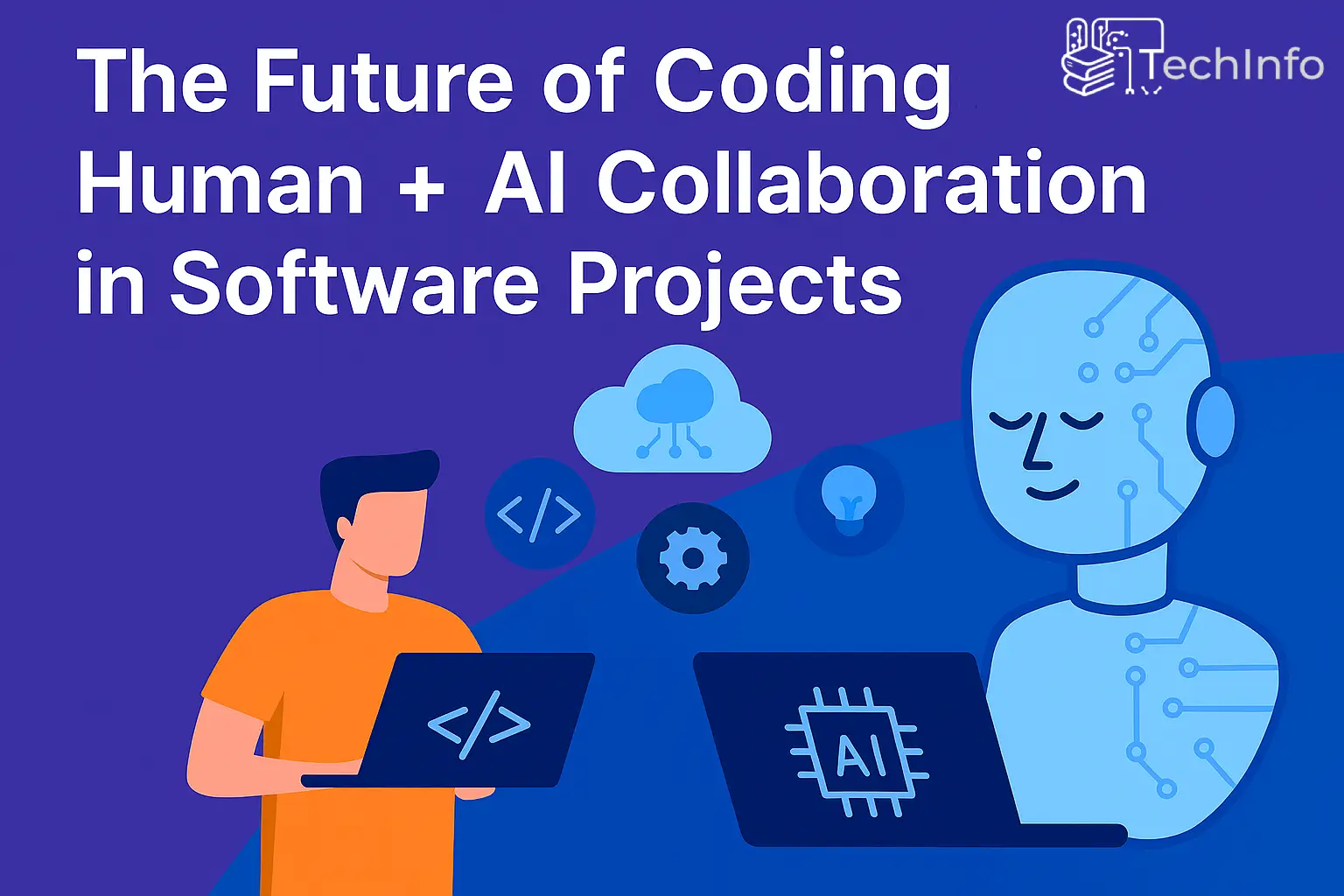The Future of Coding Human + AI Collaboration in Software Projects
Artificial Intelligence (AI) has not replaced developers — it’s partnering with them. In 2026, the future of coding is defined by collaboration between humans and AI, where creativity and computation unite to produce faster, more reliable, and highly innovative software development solutions. At TechInfo SRL, we see this transformation firsthand. AI has evolved from a support tool into a co-developer that assists in everything from code generation to predictive analytics. The human developer’s role has shifted — from writing every line of code to designing smarter systems that guide AI itself.
1. The Shift from Solo Coding to Collaborative Intelligence
Software development used to be a manual, linear process. Developers wrote, tested, and debugged code line by line. Now, with AI systems like GitHub Copilot X and DeepCode, coding has become a dialogue between human intention and machine intelligence.
Developers describe what they want; AI translates it into executable code. Humans validate the logic, while AI ensures efficiency. This synergy has turned coding into a collaborative ecosystem rather than a solitary act.
👉 Related: How AI Is Revolutionizing Software Development in 2026
2. AI as a “Digital Co-Developer”
AI now performs many tasks previously reserved for junior developers — suggesting syntax, predicting bugs, and optimizing architecture.
For example:
- Tabnine predicts entire code patterns based on previous projects.
- CodiumAI generates automatic unit tests that match the developer’s logic.
- Amazon CodeWhisperer integrates with cloud APIs to deploy apps faster.
However, AI’s true value lies not in automation but in augmentation. Developers still decide why and how things should work, while AI focuses on how fast and how efficiently.
3. New Roles in the AI-Driven Development Team
The rise of AI in coding has created new professional roles within development teams:
| Role | Description |
| AI Integration Engineer | Ensures seamless collaboration between human coders and AI tools. |
| Prompt Engineer | Crafts effective prompts to guide AI code generation. |
| AI Code Reviewer | Validates AI-generated code for logic, compliance, and ethics. |
| Machine Learning Coordinator | Trains custom AI models based on company-specific data. |
At TechInfo SRL, our development teams already include hybrid roles like these, blending technical expertise with AI literacy.
4. AI Enhancing Creativity, Not Replacing It
One of the biggest myths is that AI kills creativity. In reality, AI is expanding it. Developers can now experiment with more designs and architectures because AI handles the repetitive groundwork.
Imagine designing a mobile app UI. Instead of manually coding layouts, a developer can describe it to an AI tool, which produces prototypes instantly. The developer then fine-tunes color schemes, user flow, and brand aesthetics.
This allows coders to spend more time on creative problem-solving and innovation, rather than syntax and syntax errors.
👉 Also Read: From Code to Creativity: How AI is Redefining Programming Skills
5. How Collaboration Improves Software Quality
AI-powered tools enhance every stage of the software lifecycle:
1. Planning & Design: AI analyzes past project data to estimate time, cost, and resource allocation.
2. Development: Intelligent autocompletion tools speed up coding.
3. Testing: Automated test generation tools ensure coverage and accuracy.
4. Deployment: AI predicts performance bottlenecks during CI/CD.
5. Maintenance: AI monitors logs for unusual behavior and alerts teams in real time.
This closed-loop collaboration reduces bugs, shortens release cycles, and delivers predictable, high-quality results.
6. The Emotional Intelligence Factor
The human touch still matters. AI cannot replace empathy, context, or understanding of end-user emotions — traits that define successful product design. Human developers use emotional intelligence to:
- Design intuitive user experiences.
- Make ethical decisions on data privacy.
- Communicate effectively within teams.
AI enhances productivity, but humans provide purpose and empathy — the foundation of impactful technology.
7. Communication Through Natural Language
By 2026, natural language programming (NLP-based coding) will have become mainstream. Developers can write prompts such as:
“Create a responsive login form with email verification.”
And the AI generates HTML, CSS, and backend logic automatically.
Tools like Replit Ghostwriter and Aider bridge natural language and machine code, allowing even non-technical stakeholders to contribute ideas. This makes coding more inclusive and accelerates collaboration between technical and creative departments.
8. The Ethical and Legal Challenges of AI Collaboration
As humans and AI share code ownership, new legal and ethical questions arise:
- Who owns AI-generated code?
- How do we ensure AI doesn’t replicate copyrighted code?
- What about bias in training data?
Developers and companies must implement AI ethics guidelines to ensure responsible use. Transparent documentation, explainable AI, and version control are becoming mandatory industry practices.
9. The Rise of Autonomous AI Developers
The next leap beyond collaboration is autonomy. Autonomous AI agents — self-learning bots capable of completing entire projects — are being tested in 2026. They can design architecture, write code, test functionality, and deploy applications, all without human input. However, humans still play the crucial role of supervision, ensuring safety, compliance, and alignment with business goals.
👉 Next Read: Why Autonomous Agents Are the Next Big Thing in Development
10. Human + AI – Building the Next Generation of Developers
The future developer is not just a coder but a creative strategist who understands both human logic and machine learning. Educational institutions and companies are shifting their training to focus on:
- Prompt engineering
- AI model fine-tuning
- Collaborative coding ethics
- Data-driven design
Organizations like We are already nurturing teams that think beyond syntax — merging analytical and imaginative thinking to build transformative digital experiences.
Conclusion
The future of coding isn’t about replacing developers with AI — it’s about amplifying human potential through collaboration.
By combining human intuition and AI precision, the software industry in 2026 is entering its most innovative era yet.
Teams that embrace this partnership, like TechInfo SRL, are leading the way in building scalable, creative, and ethical digital solutions.
The human-AI alliance is not just the future of software development — it’s the blueprint for the next digital revolution.







